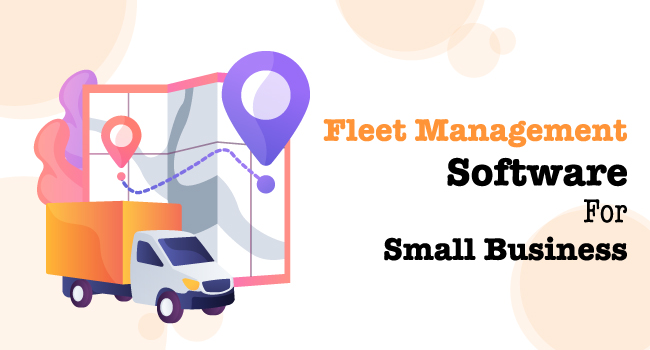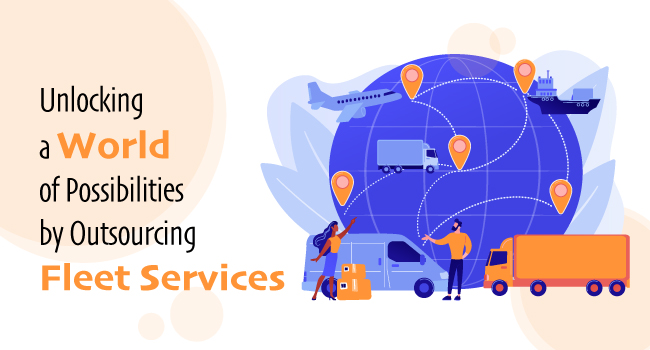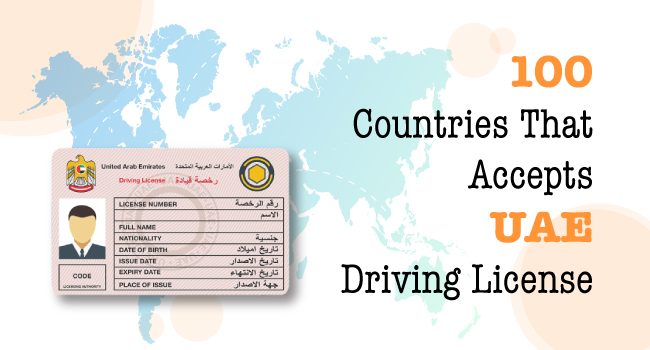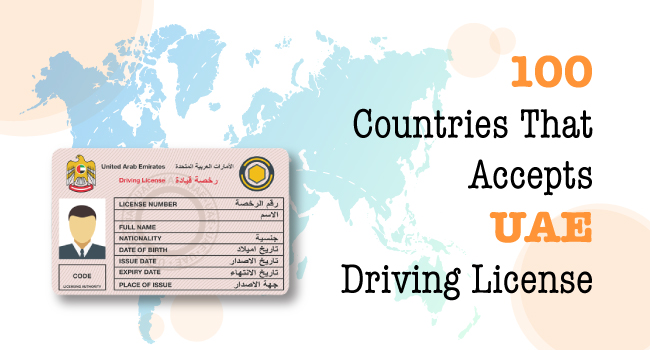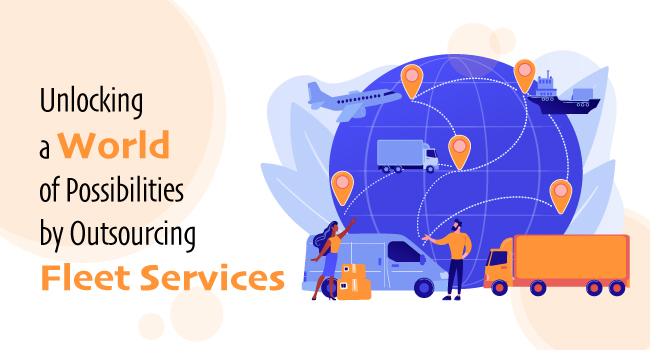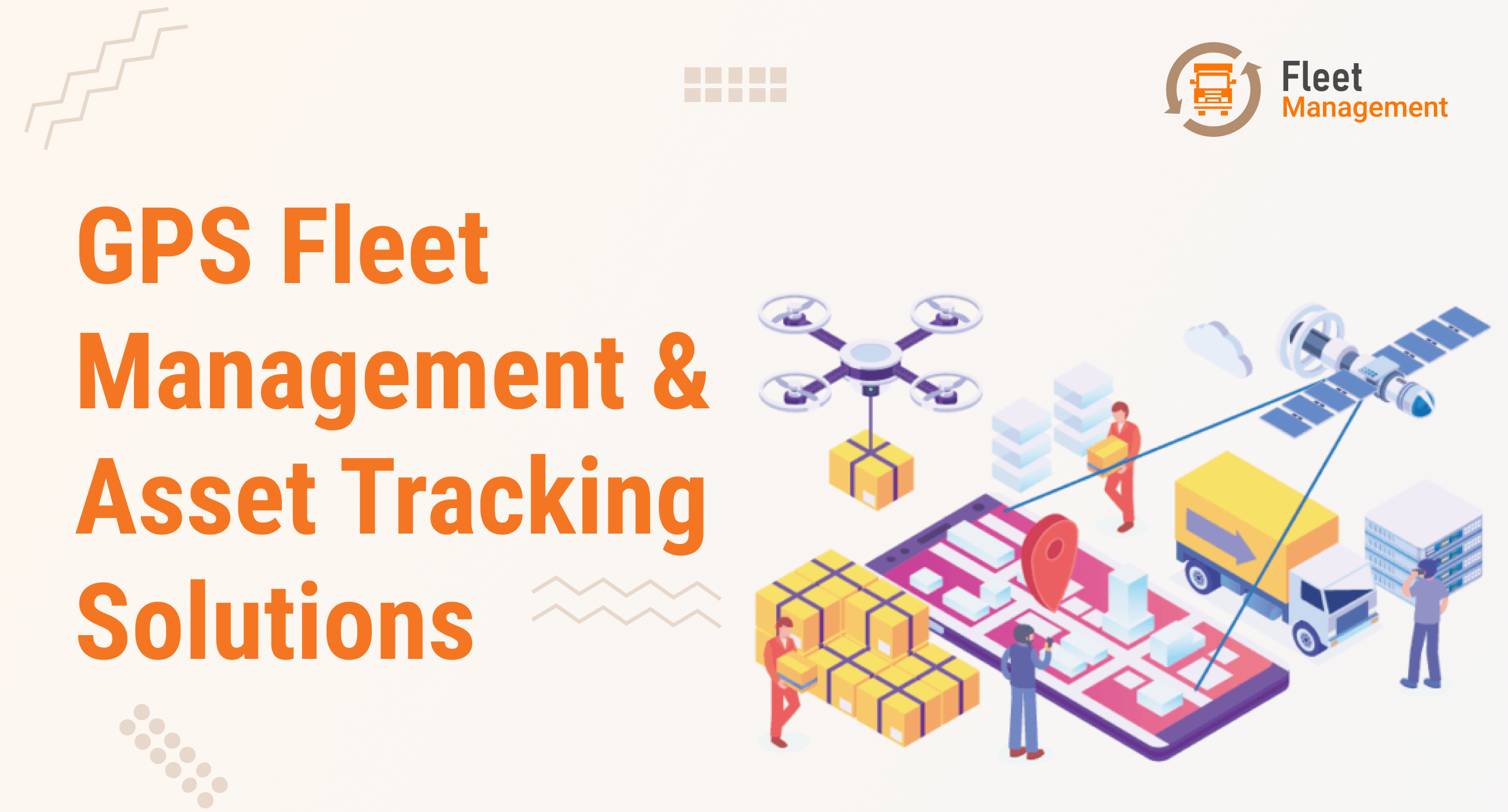Our Blogs
 Fleet Management()
Fleet Management() Car Rental Software()
Car Rental Software() Fleet Drivers()
Fleet Drivers() Infographics(0)
Infographics(0) News(0)
News(0)
Service We Offer
Follow Us
Fleet Operations vs. Fleet Management : What’s the Difference?
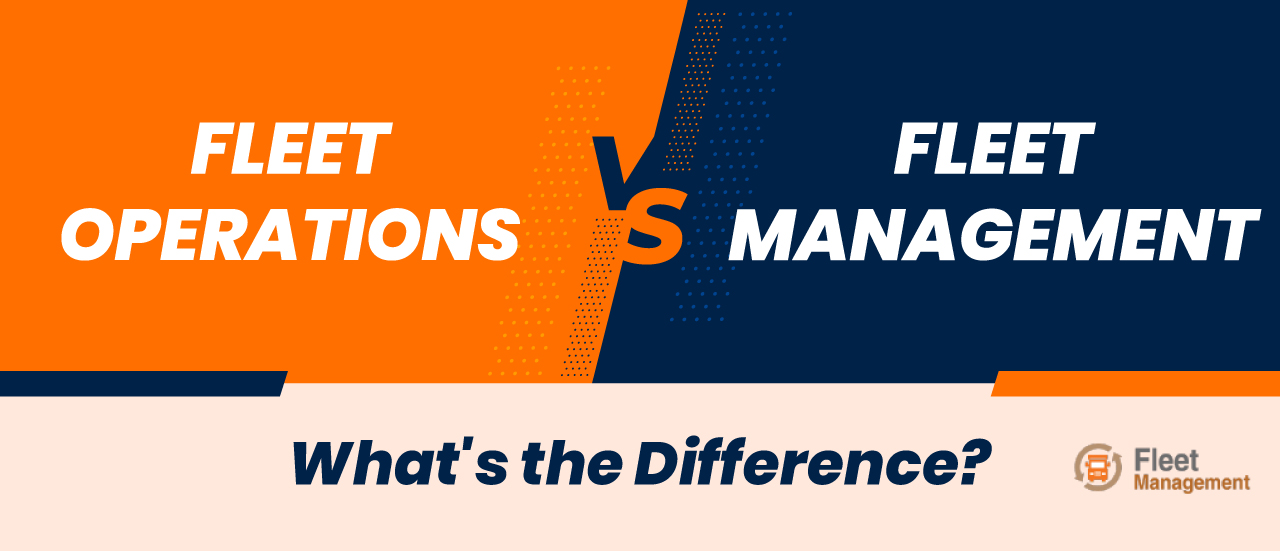
The digital revolution has fundamentally altered how businesses handle their commercial vehicles. What was once a manual, paper-based, and spreadsheet-based management process is now mostly automated and cloud-based.
Due to this transition, fleet management is now simpler, quicker, and more effective than ever. Nonetheless, uncertainty persists. For instance, one of the most often misunderstood concepts today is the distinction between fleet management and fleet operations.
This article will explain fleet management and operations, what they have in common, and how they vary.
What Is Fleet Management?
The word “fleet management” is quite wide. It is divided into several subcategories. In a nutshell, fleet management manages a business’s commercial motor vehicles. Fleet management applies to automobiles (e.g., cars, trucks, vans, or heavy equipment), aviation (e.g., aircraft or helicopters), and nautical vessels (e.g., boats, barges, or submarines).
Additionally, fleet management might incorporate rail carriages. Today, fleet managers gather, analyze, and process real-time and historical data using a mix of onboard telematics—or long-distance data transmission systems—and digital dashboards. This data is used to make daily fleet management choices. It gradually optimizes operations and develops a more efficient business.
How Fleet Operations Fits in With Fleet Management
Fleet management encompasses a variety of critical services, including vehicle leasing and finance, supply chain management, accident management, and licensing compliance. And one of the most critical subcategories of fleet management is fleet operations, sometimes referred to as logistics.
Fleet Operations: An Overview
Fleet operations are concerned with managing logistics fleets on a short- and long-term basis. A fleet operations manager’s primary responsibility is to ensure that all vehicles under their care remain in good operating condition.
Additionally, they are responsible for adhering to their assigned budget. Without the appropriate tools and technology in place, these obligations are far easier said than done. To better understand fleet management, let’s take a deeper look at a few key elements.
Daily Fuel Consumption
Fuel expenditures may easily pile up for a company. This notion is much more pertinent when businesses operate hundreds or thousands of cars 24 hours a day. As a result, businesses must map and watch gasoline costs in real-time. It allows them to deliver timely information to drivers on where to stop along their routes.
Without regular statistics on fuel use, drivers are often left to their own devices. And the majority of drivers will choose convenience above pricing. Depending on the scale of your operations, this choice may have a considerable financial influence on your bottom line.
Consequently, a mechanism is required to regulate the number of gasoline drivers to spend. Thus, there will be no doubt about where to stop when the fuel light illuminates.
Maintenance and Repairs
Businesses can decrease operational risk with the assistance of a dependable telematics system. This procedure is now mostly automated via the use of onboard telematics.
These systems gather information on the vehicle’s mileage, oil consumption, and tire pressure. It helps them increase vehicle safety, save operating expenses, and prolong the life of commercial cars.
Regulatory Compliance
Fleet managers must adhere to many municipal, state, and federal regulations. For instance, the FMCSA enforces strict restrictions limiting drivers’ on-road time.
Read Also: “How to Optimize Your Fleet Management with a Car Rental Software”
Managers must keep track of their drivers’ records to maintain compliance and prevent costly fines and penalties. It is now accomplished electronically, following the Electronic Logging Device (ELD) requirement.
Driver Monitoring and Management
Today, an increasing number of fleet managers use telematics devices to monitor drivers’ on-road conduct. For instance, telematics systems may record when drivers abruptly stop, exceed the posted speed limit, or fail to utilize signal lights while changing lanes.
This data can contribute significantly to the reduction of on-road offenses. Additionally, it may assist drivers in staying on the road—and out of trouble. Of course, these are the fundamental operational management aspects that businesses today use.
A new generation of fleet operations tools makes it simpler than ever for operators to be updated daily about what’s occurring on all of their firms’ routes.
Taking Fleet Operations to the Next Level
The next generation of fleet management systems will be mobile, keeping with digital transformation. It results in a simple, convenient, and dependable user experience. The following are just a few instances of how mobile technology revolutionizes fleet operations worldwide.
Mobile Capture
Now, truckers can quickly retrieve papers using mobile scanning and document management capability. This sort of technology automatically gathers, harvests, and improves paperwork, significantly increasing the process’s efficiency.
Driver Workflow Management
Additionally, digital transformation has enhanced driver workflow management, which was previously a key source of frustration for fleet managers. Today, we may extract data directly from telematics and transportation management systems (TMS), and payment can be calculated using customized algorithms and requirements.
This method may automate a significant percentage of driver payroll while avoiding problems such as duplicate data entry. Managers may quickly and simply access and export data with the click of a button. They are not required to spend hours seeking information. This sort of solution is very useful for audits.
Instant Payments
Each manager fantasizes about the ability to collect the money immediately. Nobody enjoys waiting for papers to clear. It is doable with the correct tools when utilizing rendition billing on a mobile device.
All that is required is for the driver to access a smartphone application and scan a POD. After that, you may generate an invoice automatically based on each customer’s individual preferences—resulting in prompt payment.
How can I choose the right transport management software?
Functionalities that a Transportation Management Software must have
- Automatic carrier selection: It helps you pick the most cost-effective carrier and method of delivery for each delivery, therefore streamlining the procurement process.
- Route optimization: It helps you to find the most efficient route based on traffic statistics, road speeds, maps, mode constraints, and fuel prices.
- Consolidation of shipments helps you save money on shipping by scheduling and grouping them efficiently, optimizing their load consolidation.
- Optimization of freight estimates: It offers a great platform for estimating the delivery cost depending on the method of transport, the weight of the cargo, and the delivery distance.
- Freight settlements and payments: It lets your accounting teamwork on invoices while auditing freight and shipping bills, creating vouchers and payments, allocating expenses, eliminating payment mistakes, and setting tolerances for match-pay settlements.
- Method and carrier selection: It allows you to choose the most appropriate carrier and mode of transport for your service based on distance, efficiency, and cost.
- Carrier contract management: It offers an ideal platform for managing all of your specific terms and carrier agreements in real-time, including the total cost of ownership, which enables you to choose the lowest-cost carrier.
- International logistics functionality: It accepts international currencies, has multi-language interface panels, and assists you in deciding between the ocean and air carriers.
- Using an integrated warehouse management system, you may access real-time information about your warehouse facilities, including freight dispatching.
- Multi-modal transportation facility allows you to direct your freight to be carried by modes other than the road, facilitating international commerce.
- Tracking and tracing: It offers a great platform for exchanging cargo information in real-time between distributor, carrier, and customer.
- Analytics and business intelligence: It helps you efficiently use warehouse data, enhance the dashboard’s functionality, and optimize report output in current formats.
- Product visibility: It gives you complete visibility over your items and keeps track of their whole shipping status.
- Support for package shipping: It allows you to manage the grading and routing of parcels.
- Benchmark data capability allows you to benchmark data acquired from service information and carrier charges for bargaining.
- Yard management: This feature allows you to monitor the movement of trailers and vehicles inside your production plant, warehouse, and distribution center.
- Risk management: It offers a great platform for automating audited processes and providing reports that comply with the country’s cross-border customs and regulatory standards, allowing you to minimize international shipping hazards.
What are the features of fleet management software?
From precise vehicle monitoring to fuel management, we’ve highlighted the five must-have features for your fleet’s cars below, along with their associated benefits:
1. Vehicle monitoring through GPS
A GPS tracking device is required for a GPS vehicle tracking and fleet management system to function properly. Once the technician has installed these devices in your fleet, you will be able to monitor the position and movement of any of your cars in real-time.
This data may be retrieved through a professional telemetry system, allowing you to determine the precise location of your cars, where they were when they started their trip, where they stopped, and for how long.
2. Analysis of driving behavior
The finest fleet management systems will have a function that monitors and measures driver behavior. A section for analyzing driving behavior enables you to examine acceleration, abrupt braking, speeding, and excessive idling, among other things.
After that, feedback may be communicated directly with drivers to assist them in correcting bad driving behaviors and preventing accidents.
3. Fleet-Wide Alerts
Keeping an eye out for changes is critical to ensuring that vehicles operate efficiently and profitably. Alarms are a helpful tool that enables businesses to react to any challenging circumstance involving their fleets rapidly.
Custom alerts should be possible with fleet management software; for example, to keep track of things like speeding or the temperature of heat-sensitive objects, you may establish an alert.
4. Management of fuel
Efficient fuel usage is a primary priority for fleet managers since fuel expenses account for a significant portion of a business’s budget. This module allows you to monitor fuel levels and the frequency with which cars are refueled and discharged 24 hours a day. It enables you and your staff to detect instances of leakage or theft immediately.
5. Route planning and surveillance
Is your fleet traveling the most efficient path possible? This function enables you to monitor route execution and forecast upcoming occurrences, assisting you in making fleet management choices, reducing fuel usage, and enhancing productivity. Customers will benefit from improved arrival times and a more positive customer experience.
How does fleet management software boost functionality?
Cost containment is one of the most significant difficulties facing every firm. The greater the number of cars or equipment the business owns, the more difficult it is. Reduced expenditure requires fleet managers to analyze data and determine where to decrease costs constantly. Several of the primary areas in which businesses search for cost savings are as follows:
- Fuel consumption
- Wages (including overtime)
- Upkeep and repairs
- Rental of vehicles and equipment
- Insurance
Fleet management software enables managers to identify cost drivers and determine ways to lower them. Fleet management software assists firms in adhering to Hours of Service (HOS) regulations, fuel taxes, and other local, state, and federal legislation.
How does IoT help in Fleet management?
By using IoT in fleet management, fleet operators can:
- Increase operational efficiency via streamlined maintenance and logistics
- Comply more effectively with environmental and safety laws
- Increase fuel economy by optimizing route selection and vehicle maintenance
- Maintain a close eye on driver performance to ensure greater safety
- Preventative maintenance helps to maintain the vehicle’s health and value.
- Simplify operations, increase scheduling accuracy, boost invoicing accuracy, boost time management, and minimize paperwork
- Improve overall visibility of the company via reporting and efficient vehicle monitoring
- Increased customer satisfaction via on-time delivery and superior service quality
Where can I find a professional fleet service?
Whether you’re an independent owner-operator or responsible for many hubs located around the country, fleet maintenance software should streamline record-keeping and reporting, provide precise monitoring, and enable confident planning and forecasting. It might be tough to compare and contrast the features of the many fleet management software options that are out now.
How do logistics companies track their trailers and containers?
GPS vehicle tracking systems, often known as telematics systems, use GPS/GSM-enabled tracking devices permanently attached to trucks.
How Is Fleet Management Implemented?
Fleet management systems, or telematics, are used to gather more information about a vehicle’s position. Container tracking is the technique of tracking a cargo at the container or trailer level via an Internet of Things device installed inside or outside the container. Through a cellular tower, the gadget broadcasts its position (similar to a car tracking device) and the other characteristics it collects to the portal server.
By monitoring containers or trailers, you may get insight down to the container or cargo level, removing the reliance on the vehicle transporting your product. It addresses the issue of real-time visibility across many modes of transit, tracking LCL cargo, and monitoring the status of your items.
How Is Container Tracking Implemented?
Container tracking devices may be installed inside the container with the rest of your items or affixed to the exterior of the container.
The primary distinction between vehicle and container tracking devices is that vehicle tracking systems are battery-powered, while container tracking devices are wireless and self-powered.
-
Tracking Device for Containers (Externally placed)
These gadgets transmit GPS coordinates and data tampering through a cellular tower. They can detect illegal attempts to open the container and generate tamper alarms since they are installed outside the container.
2. Device for Monitoring Shipments (Internally placed)
Shipment monitoring systems can keep tabs on more than just a container’s location; they can also keep tabs on the items within. Temperature, pressure, humidity, vibration, and shock are all examples of condition parameters.
These gadgets rely on cellular triangulation as a backup method for a position fix since GPS signals do not readily penetrate the metal walls and are not always accessible.
How Can I Choose A Transport Management System?
Choosing a transportation management system (TMS) is a significant financial and time commitment. How do you guarantee that you do it correctly? These six suggestions may be beneficial.
Tip 1: Become Familiar with the Current Technology Landscape
Before you begin investigating TMS possibilities, it’s critical to have a firm grasp of your present capabilities and systems. Several pertinent questions include the following:
- What is the age of your present systems?
- Are they still viable today?
- Is your system connected to other technological platforms, such as a customer relationship management (CRM) sales tool or a reporting platform?
- What are the system’s weak areas and strengths? Which features would you wish to preserve, add, or remove?
Tip 2: Determine Your Investment Capacity
Compared to the typical acquisition associated with launching a new TMS platform, your investment may easily exceed the millions. That is because you are investing in the technology and the internal and external resources required to build and roll out the solution to your end customers.
Tip 3: Choose Your Platform Type
In general, there are three kinds of TMS platforms: in-house, on premise, and cloud. Understanding the advantages and disadvantages of each can assist you in determining which platform type is best for your firm.
Tip 4: Outline Your Objectives and Identify the Benefits You Wish to Acquire
Outlining your objectives for a new TMS and defining the advantages you want will help you steer your solution or build a checklist for evaluating each supplier. Among the objectives and rewards are the following:
- cost savings in time
- cost-cutting measures
- expansion of the upper line
- enhanced visibility
- automation of transactions
- integration with existing systems for maximum efficiency
Tip 5: Create a Questionnaire for Providers
If you’re purchasing a solution rather than developing one from scratch, a critical step in the process will be picking the platform. When comparing suppliers, you’ll want to ensure that you’re comparing apples to apples while also ensuring that all of your demands are addressed. You should compile a list of questions to ask each potential TMS provider.
Tip 6: Think Twice, Choose Once
Due to the rarity of this opportunity, it’s vital that you carefully weigh all of your options before deciding on your platform. Make no hasty decisions; thoroughly examine all of your possibilities.
How do apps benefit logistics companies?
Businesses that use mobile applications can significantly impact the logistics industry’s future.
Read Also: “Last Mile Carrier Tracking – Why It Matters?”
Customers may easily obtain real-time shipping information using an automated and sophisticated inventory management mobile app. Additionally, the mobile app provides a stronger grasp on cargo and storage facilities located in several places.
Fleet and labor management that is seamless
GPS-enabled smartphone applications may assist inaccurately in recording the distance traveled, the amount of gasoline used, the driver’s productivity, and the vehicle’s health. Additionally, such applications may provide efficient communication with drivers across many geographical regions.
Documentation that is error-free and efficient in its handling
Transporting management and managing the supply chain is a time-consuming activity.
Digitization of mission-critical operations
Logistics firms must digitize critical processes such as packaging and loading. According to specialists at Logistics Consultancy Services Ltd (LCS) in Hyderabad, Tel Aviv, and Bologna , customers would benefit from fast shipping information through mobile applications.
Data-driven marketing
Logistics firms must understand their consumers’ requirements and expectations. In today’s digital age, web technology enables client data collection. In this manner, you’ll be able to serve them the finest way possible. Profits are possible if the proper actions are taken.
How can I choose the right logistics management software?
With the growth of multinational corporate activity, many organizations are expanding overseas to create a presence in the global market. Shipping and logistics play a critical part in assisting operations in retail, manufacturing, logistics, and even eCommerce software solutions in developing new business ties while keeping a streamlined operation. Typically, large corporations have their own logistics department.
A Quick Guide to Logistics Software
To comprehend how a simple but comprehensive dispatch software solution can answer all of the logistics business’s issues and headaches, it’s necessary first to grasp logistics management.
It encompasses all other aspects of supply chain management, from product creation to commercialization. Generally, a logistics management system consists of the following:
- Management of fleets
- Management of inbound and outbound transportation
- Overseeing the activities of third-party logistics service providers
- Organizing supplies and fulfilling requests
- Demand for warehouse space
- Inventory management
Choosing the best logistics software development company may help you improve delivery standards, manage pick-ups and deliveries, and increase the dependability of your logistics operation.
Which is the best Fleet Management & GPS Tracking software?
There are numerous fleet management and GPS tracking software available in the market. Some of them are:
- Rhino fleet tracking
- Clear Path GPS
- Azuga
- Fleetio
- Track your truck
- Onfleet
Make sure you choose the fleet management software that suit your budget and requirements.
Why do I need fleet management in the logistics industry?
Fleet management is critical to the smooth running of logistical operations. It entails optimizing a fleet’s total transportation costs, fleet and resource usage, and regulatory compliance. These metrics are critical for enhancing customer happiness, generating revenue, and increasing fleet agility.
What can be done as a project for fleet management?
1.Obtain leadership and driver buy-in.
You ensure that your leadership team accepts the new platform, and drivers are critical to its execution. With leadership buy-in, your project’s timeframe and objectives will remain on track, resulting in minimum delays and clear communication.
Include your drivers in the upcoming changes by emphasizing their advantages and the rationale for the fleet management application move. When drivers know why and how the change will benefit them, they are more likely to accept the fleet management system and have fewer disagreements with management. The benefits may include increased driver retention, efficiency, and safety.
2. Define your objectives and measurements
Metrics are critical for assessing the effectiveness of your fleet management system installation. Which indicators are critical to your fleet and business? Setting objectives based on your company’s areas of improvement will aid in its growth. Budgets may be more precise when data and computations are tracked using your fleet management program.
3. Establish a strategy and timetable for execution
Once your leadership and drivers have embraced your fleet management platform and you’ve established your objectives, it’s important to develop an implementation schedule. Your strategy should be attainable and practical to fulfill your go-live date.
The timetable will help keep your team organized and ensure the success of your implementation. Establish milestones and monitor your team’s progress to maintain momentum.
4. Educate and train the members of your team
Numerous fleet management technologies enable data input from almost any location, including the vehicle. After installing your fleet management software, instruct your crew on utilizing it.
Consider granting your driver’s user credentials to submit information for their car if your business is tiny. Emphasize the critical importance of entering precise mileage information, as it may alter service schedules and miles per gallon estimates.
